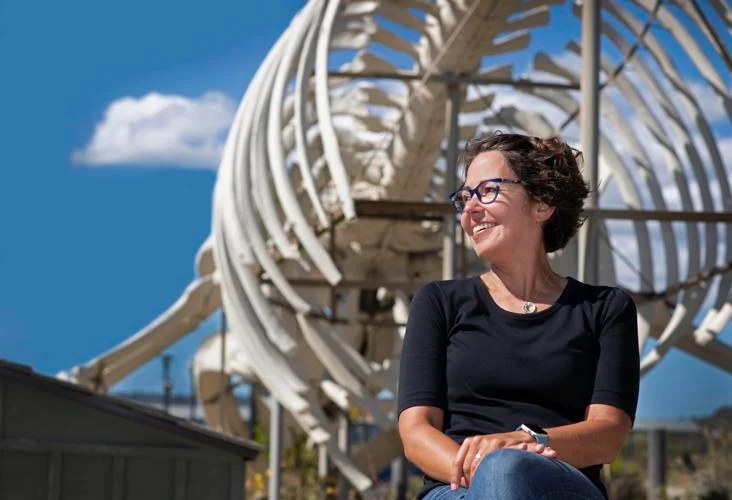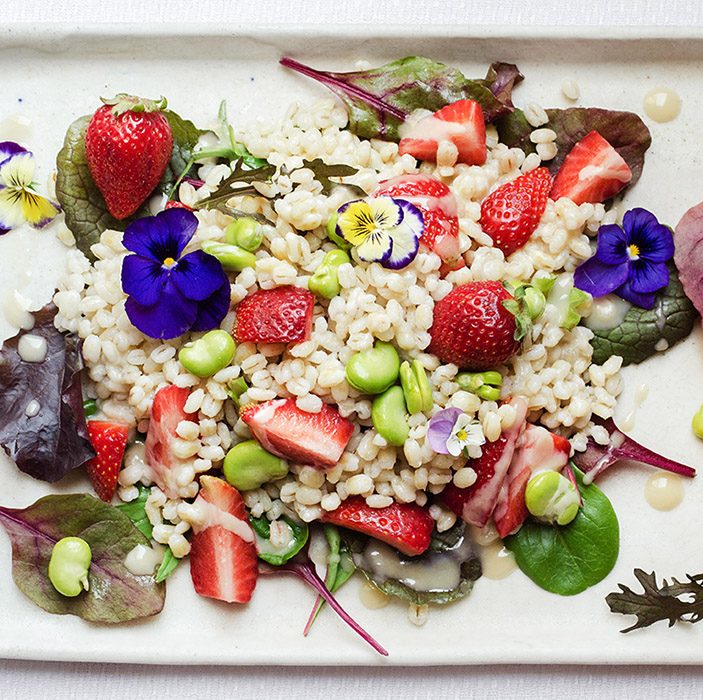Early in the morning on Monday, May 13, Vittoria Brambilla will open her technological treasure chest at the Department of Agricultural and Environmental Sciences at the University of Milan. In jargon it is called a phytotron and is an air-conditioned room. Here are kept 400 precious plantlets, ready to be transferred to Italy’s first experimental field of the CRISPR era, with the blessing of the Ministry of Environment and Energy Security. Fertile soil awaits them in which to sink their delicate roots, and then sun, wind, rain and perhaps drought and pests. All that changeable stuff happens when you grow outdoors instead of inside a laboratory.” To learn all about this field debut (the first after a 20-year wait in Italy), the trial that is about to begin and who made it possible, there is my new piece for Le Scienze, with comments from Vittoria Brambilla, Roberto Defez, Elena Cattaneo, Roberto Schmid and Federico Radice Fossati, the ag entrepreneur who offered his land for the trial. For more technical details on this fungus-resistant rice there is the article I had published in Nature Italy. In the gallery above, meanwhile, you will find: the researchers of the laboratories directed by Vittoria Brambilla and Fabio Fornara, the sign posted outside the experimental field, the climate-controlled chamber holding the edited seedlings until next week, one of the trays in which they will be transported, the cage delimiting the experimental field, yet to be completed with the upper part (28 square meters in Mezzana Bigli, in the province of Pavia, northern Italy).
Will edited foods appeal to consumers?

While the number of studies on this topic is limited, they generally align in indicating that genome-edited plants are more appealing to the public than GMOs. Supporting this assertion is an analysis set to be published in the June issue of Current Opinion in Biotechnology. Hans De Steur and his colleagues at the University of Ghent in Belgium conducted a review of data collected from various countries worldwide, including Europe, Asia, and the Americas.
Continue readingOpenCRISPR – gene editing meets AI
Natural evolution has had four billion years to experiment with living matter. From now on, artificial intelligence will also help expand the catalog of possible and desirable molecules. These so-called ‘language systems’ are no longer limited to producing text or images, as exemplified by ChatGPT or Midjourney. They can now be instructed and utilized to design new proteins, thereby potentially creating improved CRISPR scissors.
Continue readingTime to give NGTs a chance

Marco Pasti grows corn, soybeans, wheat, barley, sugar beets, potatoes, some wine grapes and walnuts on his farm near Venice, in Italy. In addition to being a farmer, he is an advocate for science-based agriculture. Don’t miss his opinion piece written for the Global Farmer Network after the European Parliament vote on the New Genomic Techniques last February. After the EU elections next June, the path of the new regulatory framework will resume, which could mark a turning point “in favor of sound science – and possibly a major break from the mistakes of the past when Europeans treated crop innovation with skepticism and even fear.”
A must-read recommended by Doudna, Gates and…

The Italian publisher did me the crazy honor of including a quote from me on the back cover of the best book of the year (IMHO), along with quotes from CRISPR inventor Jennifer Doudna and Bill Gates. The autobiography of Katalin Karikó, the mRNA vaccine scientist, is a must-read for those who love great science and great minds. We had already blogged about her in the aftermath of the Nobel Prize.
Resurrecting extinct species _ where do we stand?

Plans to genetically bring mammoths and other vanished animals back to life have scientific stakes far beyond the imagery of Jurassic Park
Continue readingXenotransplant patient is well (fingers crossed)

This is good news, to be celebrated with caution. The first patient with a CRISPR-edited pig kidney has left the hospital. A little over two weeks have passed since the surgery at Massachusetts General Hospital, but according to U.S. press reports, Richard Slayman is well enough to have been discharged. Fingers crossed, then, for this 62-year-old man who, thanks to a xeno-rene, no longer needs dialysis.
Continue readingHappy spring break 🐣
Image

CRISPR trials: the 2024 update

The recent approval of Casgevy represents the first official success of gene editing-based therapies. The treatment for sickle cell anemia and thalassemia came in record time, only 11 years after CRISPR was invented. “Two diseases down, 5,000 to go,” commented Fyodor Urnov, Director of Technology & Translation at the Innovative Genomics Institute. Among the many diseases awaiting a cure, what will be the next to benefit from CRISPR? At what rate can we expect new treatments to arrive? The periodic update published by IGI is a must-read to navigate through hope and hype, papers and press-releases. The picture is overwhelmingly positive, but there is also some cause for disappointment. Here is an excerpt from the introduction:
Continue readingCRISPR plants for all tastes

It could take a while to bring the first CRISPR products to our tables, but it is always a good time to see what progress is being made in the labs. Here are some novelties, reported by Isaaa: high-fiber barley, aromatic soy milk, extralong-grain wheat, TiGER strawberries, and my favorites: seedless, thornless, and higher-yielding blackberries and black raspberries.





